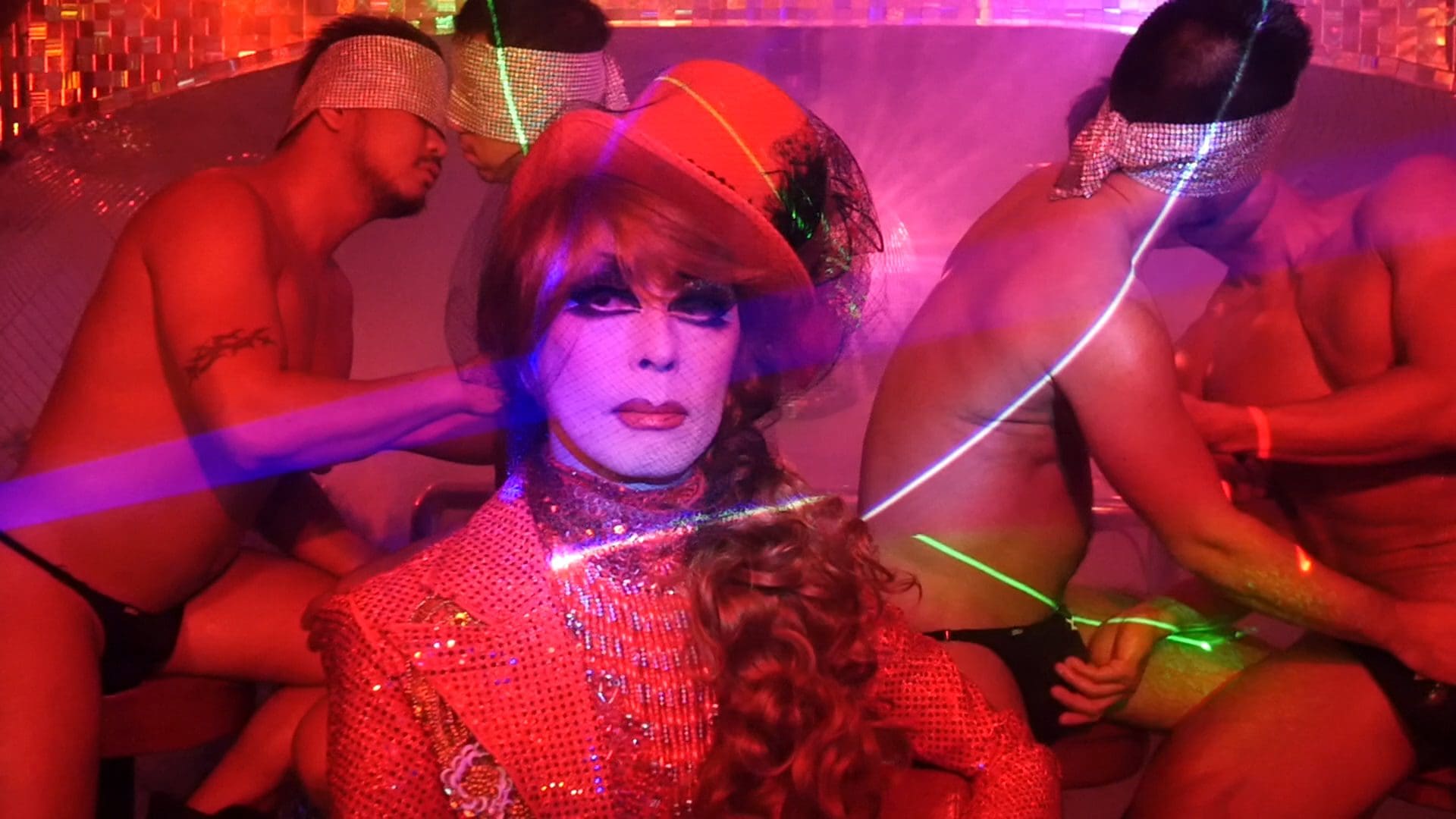
Director Graham Kolbeins’s new documentary, Queer Japan, is exactly what it sounds like: a wide-ranging look at what it means to be queer in present-day (or at least pre-COVID) Japan. Filmed over a five-year period, Kolbeins conducted over 100 interviews and the resulting film covers everything from drag scenes in different cities, to the struggles trans people face in trying to change their legal documents. It feels as close to comprehensive as it possibly could. However, because Queer Japan‘s focus is so broad, it can also feel a bit too episodic.
Kolbeins and his crew clearly collected a lot of great footage and every few minutes we meet a new, wonderful personality. There’s Nogi Sumiko, an artist who created a popular scarf with a fake breast on either end. There’s Simone Fukayuki, a drag queen at a bar called Diamonds Are Forever who is interviewed sitting on a stage while four blindfolded men kiss and touch each other behind her. There’s also Aya Kamikawa, an assemblywoman from Setagaya who hid her transness for many years before becoming a politician and eventually had a hand in pushing through legislation that allowed trans people to update their legal documents. Each interviewee is fascinating and while the constant onslaught of new faces can become tiring by the film’s end, it’s mostly a thrill to meet them at all.
Perhaps one of Queer Japan‘s most enjoyable interviewees are the patrons of Department H, a performance space/bar where the “H” stands for “hentai party”—which, as onscreen text explains when the term is used early on, simply means “abnormal sexuality” rather than the meaning it has elsewhere. That’s expressed in a number of ways, from puppy play to traditional drag, but the most interesting regular performer is Saeborg, who uses rubber to make outfits that, “transcend the human form for a completely new gender.” As Saeborg describes their work, we see a massive inflatable pig on Department H’s stage and watch as one person after another dressed as a piglet emerges from the sow until they’re all fighting to suckle. It’s an incredible sequence and worth the price of admission alone.
However, while Queer Japan does often give the viewer a detailed picture of a scene or individual, it does still feel like a product made for an outside perspective. As butoh dancer Atsushi Matsuda says while pointing at the filmmakers behind the camera, “This is an example, but I feel like foreigners are fascinated by Japan.” He goes on to explain, though, that despite that attention, Japanese people “aren’t ready to move on yet,” by being as open and accepting as so many of the film’s subjects would like it to be.
On one hand, we as viewers could take that declaration as just Matsuda’s perspective. However, it’s worth wondering how much varnish Kolbeins may unintentionally put over queer people’s real, lived experiences in Japan by keeping the focus so broad. So many of his subjects are artists or leaders in the movement for equal right or big names in queer spaces that it can be hard to understand how what we see reflects how the average queer person lives. Certainly, there are a few brief examples, but the film tends to favor positive views over all, leaving trickier subcultures or ideas unexplored.
Perhaps the most intriguing example comes near the film’s end, during footage of the Tokyo Pride Parade. Between the usual talking heads of someone criticizing corporate involvement in the event and a guy detailing his sexual proclivities, we see interviews with Freddy Kitsu. As they explain, they don’t have time for the corporate love is love message of pride when they can’t even feel safe from discrimination while using a public restroom. Moreover, they attend the parade with a small group of masked individuals who express a message of solidarity with those who are still closeted precisely because they fear that kind of discrimination. It’s a fascinating idea, but one the film quickly abandons, instead moving on to a fun but somewhat meaningless dinner amongst some of the featured queer artists.
Fascinating as it is, Queer Japan misses a lot of opportunities because it adheres so closely to the promise made by its title. Kolbeins dips into many interesting aspects of queerness in Japan, but never really explores them with any depth. And while some viewers will be left wanting a bit more focus, there is one benefit to the film’s approach. By giving the viewer a general understanding of the history of queerness in Japan, it underlines how universal the experience can be despite the location. Queer Japan may be about a specific place, but so much of what it depicts transcends country.

